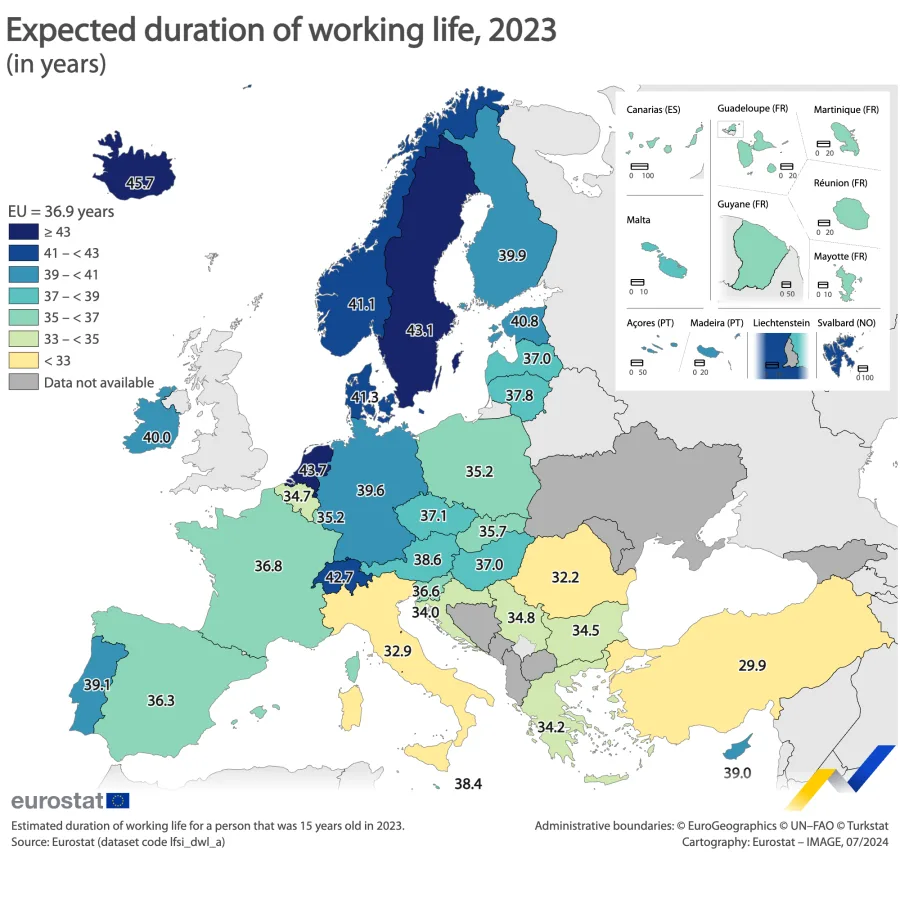Brussels -A young Italian woman entering the labor market today can expect a working life of 28.3 years. On average, a male peer will work 37.2 years. Nine years more, which – in light of average salaries in Italy and assuming that there is no wage equality yet – an economic gap of more than 200 thousand euros. No one else in the EU has such a wide gender gap.
Eurostat data on the length of working life in member states confirm the disturbing trend: Italy is the last stronghold of the 20th-century model in which career is for men, family care, and home life for women. Italy’s 8.9-year gap recorded in Italy is more than double the EU average, narrowing progressively to 4.3 years in 2023. Italy trails all others: in second place for gender gap is Romania with 7.1 years of work difference, followed by Greece and Malta with 6.9 years.

In the 27 member countries, the EU Statistical Office calculated an average working life of 36.9 years in 2023: 39 years for men and 34.7 for women. Over the past decade — except for a setback during the pandemic crisis in 2020 — it has steadily increased for both genders. Increased female labor market participation has narrowed the gap. Compared to 2013, the gender gap in working life has narrowed from 5.2 years to 4.3.
In Northern Europe, people work for over 40 years: the Dutch have the longest working life, 43.7 years, followed by Sweden (43.1 years), Denmark (41.3 years), and Estonia (40.8 years). Eastern countries and along the Mediterranean are on the opposite side of the ranking: the shortest durations, under 35 years, in Romania (32.2 years), Italy (32.9 years), Croatia (34.0 years), Greece (34.2 years), and Bulgaria (34.5 years). They are joined by Belgium, with 34.7 years.
As for the gender gap, in the North, the problem is no longer the length of working life but the wage gap between men and women. All Northern European countries show a gender gap below the EU average of 4.3 years. Lithuania and Estonia are the only member countries with a negative gap, with women working respectively 1.3 years and 0.8 years longer than men. Among other countries, the smallest gender gap was in Latvia and Finland, with only a 0.1-year difference between males and females. The longest working life for women was found in Sweden (41.9 years), the Netherlands (41.5 years), Estonia (41.5 years), Finland (39.9 years), Denmark (39.8 years), Lithuania and Portugal (both 38.2 years).
In the generalized increase in working life expectancy, it should underlined that in almost all EU countries, the working life of women is increasing more than men’s. The exceptions are Denmark and Romania. The gap in Italy is also closing, albeit very slowly: while it has now fallen below the 9-year mark, in 2013, a 15-year-old male could expect to work 9.3 years longer than a female peer. At this rate, Italy will not have closed the gap even in a hundred years.
English version by the Translation Service of Withub





![[foto: Rasheedhrasheed/Wikimedia Commons]](https://www.eunews.it/wp-content/uploads/2025/04/A_glass_of_wine-350x250.jpg)



